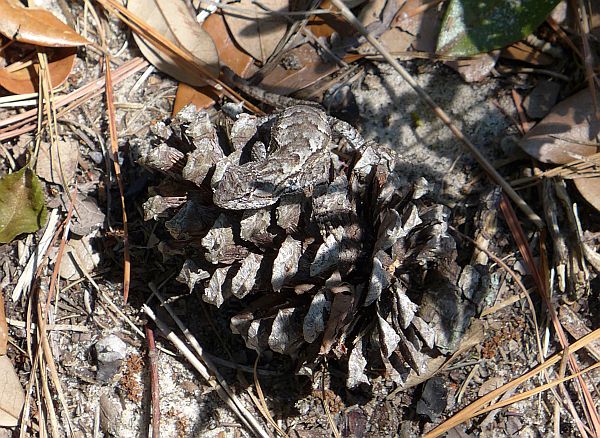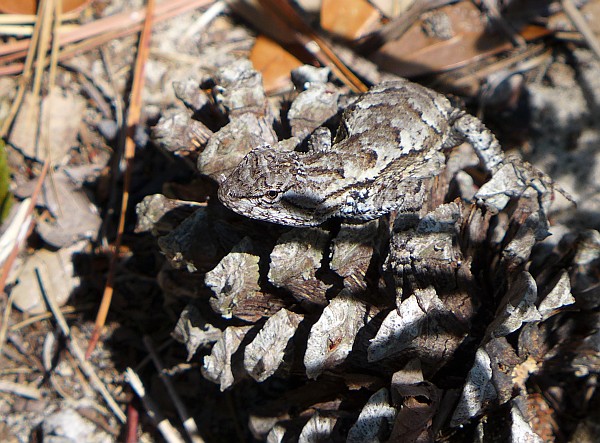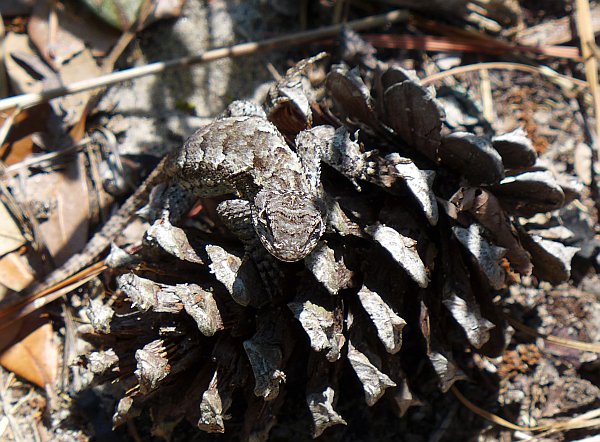
On Fourth of July weekend I was hiking at First Landing State Park in Virginia Beach when I noticed an odd-looking pine cone in the dappled shade next to the trail. I paused to look more closely.
It’s not just a pine cone!
Here’s a better look.

… and this view from a different angle.

After two minutes of my ever-closer approach this lizard had had enough and ran away.
I know nothing about lizards so I googled images for a “brown lizard sandy shore Virginia” and found a photo whose description said “Matches the pine cone.” How cool is that! Someone else had photographed an eastern fence lizard on a pine cone.
I also found out that …
- The eastern fence lizard (Sceloporus undulatus) is native to the eastern U.S. and southern Pennsylvania. Theoretically I should have seen one in all my years of hiking near Pittsburgh but this is a first for me. (I’ll admit I haven’t been looking very hard.)
- Their scales are keeled, a feature you can see in the photos.
- Eastern fence lizards are sexually dimorphic. This one is female because her throat and flanks are whitish where adult males are shiny blue. During the mating season males flash their blue bellies to attract the ladies and tell other guys, “This is my territory.” Click here to see the male’s amazing underside.
- That flashy blue behavior is risky. Flashy males are more likely to be eaten by birds.
- In 2009 Penn State biologist Tracy Langkilde reported that eastern fence lizards who live where there are fire ants have longer legs than their predecessors 70 years ago — an example of evolution in action. They’ve also learned to twitch instead of freeze when they encounter the voracious ants that can kill them in less than a minute.
I’m glad I stopped to examine that pine cone. I usually say, “Keep looking up” but it pays to look down sometimes, too.
(photos by Kate St. John)
Love this gal! I still haven’t had time to confirm what kind of little lizards I saw hiking in Yosemite. A few would do pushups, at least it looked that way, when they came out onto a sunny rock. I have pictures and need to do my research now like you did. I’m moving in five days though so first things first, the lizard ID has to wait.
I backpack the Appalachian Trail. These lizards do reside in PA, and are often seen on rocky cliffs there, to the east of Pittsburgh. I remember spotting them in the area south of Carlisle and also in Maryland, just below the Mason Dixon line.
Thanks for the tip, Katydid. I will look harder!